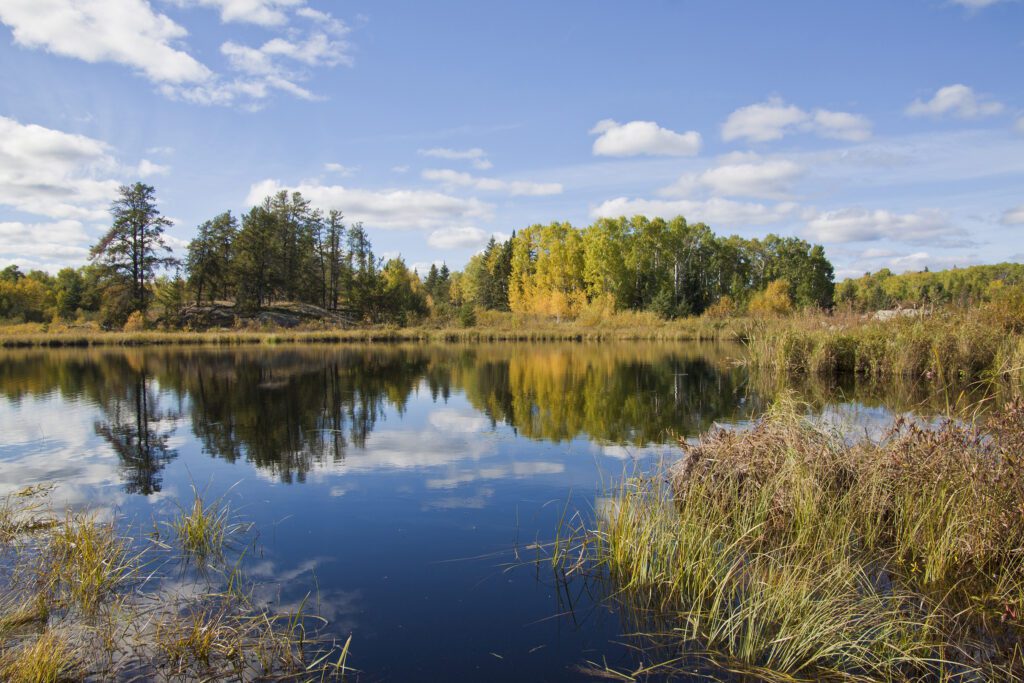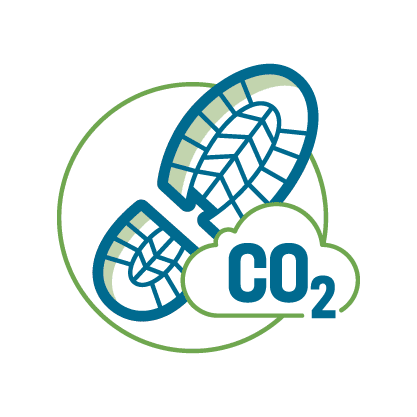Home / Environment – Assessment & Progress
Alongside social and economic indicators, environmental parameters are a key component
of a product’s sustainability.
The NBSA’s environmental assessment is comprised of an
Environmental Life Cycle Assessment (E-LCA) and a Land Use Assessment (LUA).1
An E-LCA’s major strength lies in its holistic approach, which evaluates multiple environmental indicators across a product’s life cycle. In the case of Canadian beef production, the E-LCA provides an extensive evaluation of the environmental performance indicators from birth through farm-gate to your plate such as the carbon footprint and water use.2
Findings of the E-LCA have also been peer-reviewed and published in the Canadian Journal of Animal Science.
The Land Use Assessment complements these performance indicators, assessing the beneficial ecosystem services, such as carbon sequestration and wildlife habitat capacity provided by Canadian beef cattle production.1
1 Canadian Roundtable for Sustainable Beef. (2024a). National Beef Sustainability Assessment: Environmental and Social Assessments. Calgary, AB: Groupe AGECO.
2 Aboagye et al. 2024. An assessment of the environmental sustainability of beef production in Canada. Canadian Journal of Animal Science. 104(2): 221-240. https://doi.org/10.1139/cjas-2023-0077

Expand the topics sections below for more in-depth detail about each aspect of the environmental assessment indicators and results.

The Canadian beef industry has made great strides from 2014 to 2021 in increasing its production efficiency to reduce its carbon footprint, which encompasses contributions from enteric methane, manure management and feed production, and from smaller contributors including transport, bedding, water, energy and grazing.1,2
From 2014 to 2021 bringing 1 kg of boneless beef from the farm gate to your plate produces 15% less greenhouse gases1,2, on track towards the Canadian beef industry’s goal of a 33% reduction in emissions intensity by 2030.3
Through a combination of improved production practices such as management, genetics and nutrition, cattle have increased their feed efficiency, leading to faster growth and reduced time to reach market weight. This means less resources (land, feed, water) are needed to raise an animal.1,2 Since less time and resources are needed, the overall GHG emissions decreased per kg of boneless beef, consumed – leading to a smaller carbon footprint (alongside improvements in other environmental indicators; fossil fuel depletion, freshwater eutrophication and photochemical oxidant formation).1,2
This is significant progress contributed by the whole supply chain and puts us on the right path to achieve the industry’s goal of a 33% emissions intensity reduction by 2030.1,2,3
1 CRSB NBSA, 2024a
2 Aboagye et al., 2024
3 Canadian Beef Advisors GHG and Carbon 2030 Goals

The role of grazing cattle in Canada in preserving carbon stored in the soil cannot be understated. Land used for beef production, of which 84% is pasture, is estimated to hold 1.9 billion tonnes of soil organic carbon1 – this is roughly equivalent to the annual emissions from over two billion cars.4
The majority of carbon is held in native (67%) and tame (24%) grasslands – highlighting the importance to keep this land intact and maintain its carbon stock.1
In addition, land use and beneficial management practices can further enhance soil carbon storage and can help offset emissions from beef production. Grassland management practices – such as rotational grazing – that increase net accumulation of carbon in grasslands are needed as they have the potential to minimize the rising concentration of atmospheric carbon dioxide1. With the accounting of removals and emissions associated with Land Management Change (LMC) and (Land Use Change) taken into consideration the net carbon footprint of beef production in western Canada is estimated to decrease by a further 6%1.
1 CRSB NBSA, 2024a
4 Greenhouse Gas Equivalencies Calculator | Natural Resources Canada

Water consumption is measured by evaluating the volume of water (L) that is used but not returned to the same water body. The assessment indicated a reduction of 177 L/kg boneless beef (consumed) in both eastern and western Canada since 2014, mostly due to increased feed efficiency and less feed needed as irrigation and drinking levels remained stable.1,2
Within each region, eastern and western beef production both decreased their [blue] water consumption since 2014. During this time, the proportion of national beef production has grown in western Canada. When accounting for this shift, the national [blue] water consumption value has increased slightly (0.4% or 7L), as more irrigation is used in this region.1,2
A larger proportion of blue water is used in the west due to a lack of rainfall and drought conditions, increasing the need for irrigation. As grasses thrive in drier conditions, it is the most suitable cover type for these areas.1 Furthermore, humans are not able to digest grasses, and therefore, raising cattle on these lands allows us to grow a powerful protein source on land we otherwise, cannot utilize for food production.
Water consumption values in Canada are extremely efficient when compared to global levels and are less than values reported in many other beef producing countries, largely due to efficient irrigation practices here in Canada.1 Although Canada has highly efficient water consumption values, promoting further improvement in irrigation practices remains important.
Water quality, measured by eutrophication potential, also improved since 2014, mainly attributed to improvements in feed rations.1,2

Beef production spans the entire country and encompasses a variety of ecosystems across the landscape. While understanding the amount of land used is important, maintaining the health of an important [and endangered] ecosystem in Canada – native grasslands – is critical. Therefore, assessing biodiversity and carbon sequestration is an important piece to view overall environmental sustainability.
When considering all of Canada’s crop and pastureland:
In Canada, there are 545 wildlife species (332 birds, 134 mammals, 41 amphibians and 38 reptiles) that use agricultural land for feeding and reproduction1. The inability of cropland alone to fulfill habitat requirements for most wildlife species demonstrates the importance of natural and semi-natural land including unimproved pasture, native grassland, forest, forest wetland, wetland and water) in Canadian agricultural landscapes.1
In Canada, most of the remaining native grasslands and pasture are under the care of beef producers.1
There is a strong link between biodiversity and land used by cattle.1
THEREFORE, grazing cattle is critical to preserving habitat and supporting biodiversity.1
Note: Biodiversity and wildlife habitat was assessed using the Wildlife Habitat Capacity on Agricultural Land Index (WHCI) developed by Agriculture and Agri-Food Canada (AAFC). Results were provided directly from AAFC.
Canadian Roundtable for Sustainable Beef
180-6815 8th Street NE, Calgary, AB T2E 7H7
info@crsb.ca
© 2025 Canadian Roundtable for Sustainable Beef
/